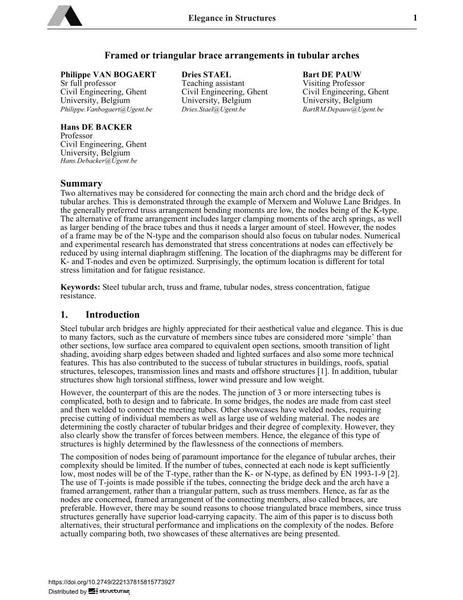Framed or triangular brace arrangements in tubular arches

|
|
|||||||||||
Bibliographic Details
| Author(s): |
Philippe Van Bogaert
Dries Stael Bart De Pauw Hans De Backer |
||||
|---|---|---|---|---|---|
| Medium: | conference paper | ||||
| Language(s): | English | ||||
| Conference: | IABSE Conference: Elegance in structures, Nara, Japan, 13-15 May 2015 | ||||
| Published in: | IABSE Conference Nara 2015 | ||||
|
|||||
| Page(s): | 62-63 | ||||
| Total no. of pages: | 8 | ||||
| Year: | 2015 | ||||
| DOI: | 10.2749/222137815815773927 | ||||
| Abstract: |
Two alternatives may be considered for connecting the main arch chord and the bridge deck of tubular arches. This is demonstrated through the example of Merxem and Woluwe Lane Bridges. In the generally preferred truss arrangement bending moments are low, the nodes being of the K-type. The alternative of frame arrangement includes larger clamping moments of the arch springs, as well as larger bending of the brace tubes and thus it needs a larger amount of steel. However, the nodes of a frame may be of the N-type and the comparison should also focus on tubular nodes. Numerical and experimental research has demonstrated that stress concentrations at nodes can effectively be reduced by using internal diaphragm stiffening. The location of the diaphragms may be different for K- and T-nodes and even be optimized. Surprisingly, the optimum location is different for total stress limitation and for fatigue resistance. |
||||
| Keywords: |
fatigue resistance stress concentration Steel tubular arch truss and frame tubular nodes
|
||||
